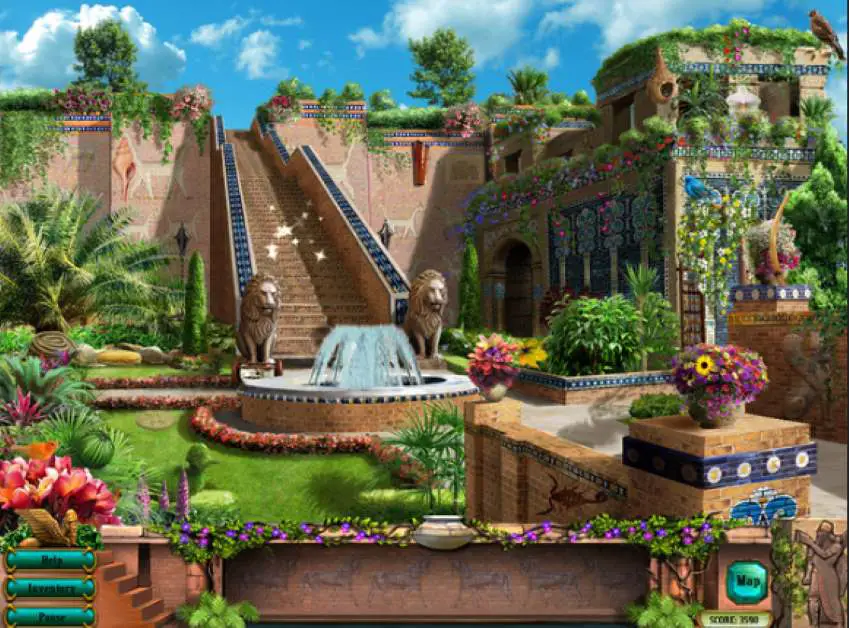Seven Wonders Of The Ancient World: Discovering The Secrets

The Seven Wonders of the Ancient World include Colossus of Rhodes, Great Pyramid of Giza, Hanging gardens of Babylon, Lighthouse of Alexandria, Mausoleum at Halicarnassus, Statue of Zeus at Olympia and Temple of Artemis at Ephesus.
Youth today love to explore new places, a trend known as wanderlust. Many are traveling to far-off destinations, driven by a desire to see the world. For many, the top spots on their Bucket List are a must-visit.
Did you know that our ancestors handed down the passion for exploring and making a "Must See" list? This phenomenon got its name, "Themata," a Greek term meaning 'things to be seen.' Philo of Byzantium coined this term when he explained "The Seven Wonders" in his work on these marvels.
Hence, this was the first-ever list of miraculous structures in classical antiquity. These wonders were located around the Mediterranean rim and in Mesopotamia.
The choice of the number seven is fascinating because it symbolized perfection in the ancient world. It was seen as a sign of abundance and perfection, corresponding to the number of known planets at that time, which included the Sun and Moon (only five were known then).
Seven Wonders of the Ancient World Are:
These are the Seven Wonders of the Ancient World:
1. The Colossus of Rhodes
The Greek titan-god of the sun, Helios, inspired the creation of the Colossus of Rhodes, a colossal statue erected in 280 BC by Charles of Lindas. This monumental sculpture stood in the city of Rhodes on the Greek Island, which shared its name with the titan.
In Greek mythology, Helios personified the Sun, a deity of great significance in the ancient world. Hence, the personification of the Sun held paramount importance for the people of that era.
You might be curious about the reason behind erecting this impressive statue of Helios. Historians believe it commemorated Rhodes' victory over the rulers of Cyprus. In 305 BC, King Antigonus I Monopthalmus's son besieged Rhodes, but the siege proved unsuccessful.
Tragically, the earthquake of 225 BC destroyed the Colossus of Rhodes. Furthermore, there were rumors that people couldn't encircle the statue's thumb alone, and its fingers surpassed the height of many other sculptures. This ancient wonder, towering at a height comparable to the Statue of Liberty, was the tallest statue of its time.

(The Colossus of Rhodes) Pic Credit: Flickr.com
2. Great Pyramid of Giza
When we think about the Pyramids, our minds often go to movies like "The Mummy" and Egypt. The Great Pyramid of Giza is a big and ancient structure that's very important. People always feel amazed when they visit it.
The structure's perfect symmetry and tall height make us appreciate the work of ancient people. We wonder how they managed to place big rocks and finish such a huge task without modern technology.
The Great Pyramid of Giza, also called the Pyramid of Khufu or Cheops, is the oldest and largest of three pyramids in the Giza pyramid complex. Furthermore, it's the only ancient wonder still standing. It was the tallest man-made building for almost 4000 years.
Many ideas surround the construction of this historic building, but the most widely accepted ones suggest that people moved massive stones from a quarry and then dragged and lifted them into place.

3. Hanging Gardens of Babylon
In the world, we witness the Taj Mahal as a symbol of love, created by a husband in memory of his wife. The Hanging Gardens share a similar story or enthusiasm behind their making.
Legend has it that King Nebuchadnezzar II built the Hanging Gardens for his Median wife. Missing the green hills and valleys of her homeland, the king ordered the construction of the Hanging Gardens to make his wife happy. They described it as "a remarkable feat of engineering with a beautiful ascending series of tiered gardens," filled with a variety of trees, shrubs, and vines.
However, a historical controversy surrounds the existence of the Hanging Gardens. This arises from the fact that "The Father of History," Herodotus, did not mention them in his work 'description of Babylon.'

(Hanging Gardens of Babylon) Pic Credit: Flickr.com
4. Lighthouse of Alexandria
The Lighthouse of Alexandria was the third tallest structure in the ancient world. Its light could be seen up to 35 miles out to sea, reflecting the sun's rays during the day and fire at night.
Rising from a square base to a middle octagonal section and then to a circular top, the lighthouse amazed people so much that describing its glory became a struggle.
Also known as the Pharos of Alexandria, the Ptolemaic King built it between 280-247 BC, reaching an estimated height of around 100m. Sadly, three earthquakes between AD 956 and 1323 badly damaged it. They used the last stones to build the Citadel of Qaitbay on the same site.
5. Mausoleum at Halicarnassus
The love is eternal and it does not matter how old is our civilization. Love never treated as Orthodox. In the world, we've witnessed numerous monuments built by husbands for their wives. However, the Mausoleum at Halicarnassus stands out as a symbol of love, as a wife desired to create a final resting place for her husband, a great king.
The Mausoleum of Halicarnassus served as the tomb for the Persian Satrap, constructed in 351 BCE. Hence, Halicarnassus, the capital of the Mauslos, boasted unmatched beauty in the ancient world.
Mauslos passed away in 353 BC, and his devoted wife Artemisia built a final resting place for him. It's interesting to mention that the English word "Mausoleum" comes from the tomb of Mauslos.
As the many monuments of the ancient world or old world meet with their destiny i.e. damaged or destroyed by an earthquake. The same is the fate of the Mouslos tomb. However, in 1494 CE, it was completely dismantled. The Knights of St. John of Malta used the tomb remnants to build their castle at Bodrum.
6. Statue of Zeus at Olympia
One of the magnificent structures in the ancient world was "the statue of Zeus". It was built by the sculpture named Phidias at Olympia. Moreover, the Phidias was the finest sculpture of the ancient world. He also worked on the Parthenon and the statue of Athena in Athens.
The statue of Zeus at Olympia was a giant seated figure. Its height was about 13 m. Hence, it was built around the 435BC at the sanctuary of Olympia Greece.
However, there were some critics in the ancient world that wrote against this marvelous sculpture. Strabo reports, "Although the temple itself is very large, critics fault the sculptor for not appreciating the correct proportions."
He has shown Zeus seated, but with the head almost touching the ceiling, so that we have the impression that if Zeus moved to stand up he would un-roof the temple".
The Temple at Olympia was destroyed after the rise of Christianity and the ban on the Olympic Games as `pagan rites’.
7. The Temple of Artemis at Ephesus
The temple of Artemis is sometimes also known as the Temple of Dianna. It was a Greek Temple, dedicated to the goddess Artemis. It was located in the Greek colony in Asia Minor (present-day Turkey). People built it three times before its final destruction in 1401 AD.
The mighty and wealthy King Croesus of Lydia sponsored the construction of the temple. Unfortunately, a man named Herostratus set fire to the temple to achieve lasting fame by forever associating himself with the destruction of something so beautiful. It appears he achieved his objective, highlighting how harmful obsessions can be at times.
Now you find out about the Seven Wonders of the Ancient World. However, if you want to find out the new seven wonders of the world, then you can click >HERE<
Nevertheless, you can find out the general knowledge stuffs like this one within our “General Knowledge” category by clicking >HERE< or you can find the lots of interesting articles under various categories by navigating our website through our home page by clicking >HERE<
Do you want to say something about the Ancient Wonders of the World? If so, then please feel free to leave your comment below.


